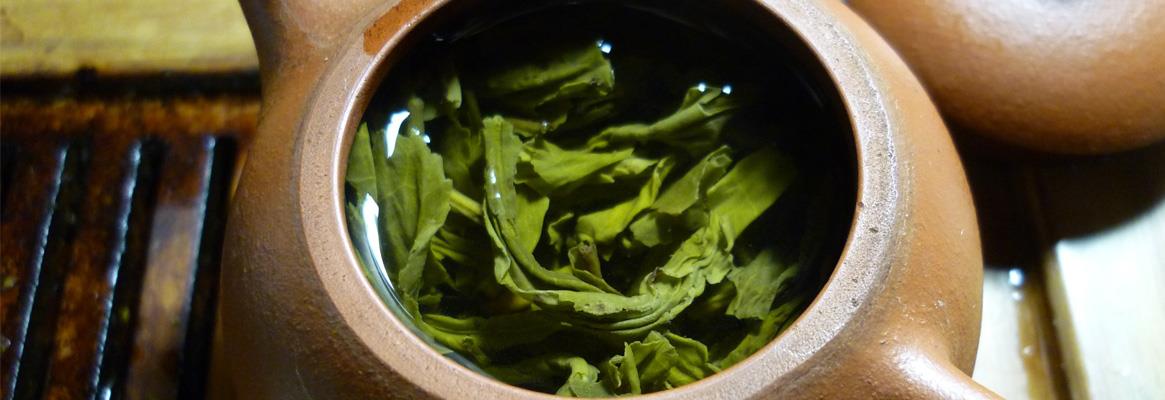As every inch of the textile market searches for moresustainable options, the shoe industry is no different. The USDA reported thatthere is a global movement to make shoes more sustainable, and that movement isgrowing. Currently, the most common textiles used to produce shoes are leatherand rubber. These two materials take decades to compose, and one AuburnUniversity researcher is ready for some change.
Tea Leaves Steepedin Sustainability
Young-A Lee is determined to use her grant from the EPA aswell as possible. Her research team, under her leadership, is developing abiodegradable material using the byproducts of fermented green tea. Thismaterial acts enough like leather in the texture and working of it that shehopes it can actually replace leather, as well as the growing piles ofslowly-decomposing leather in landfills.
Lee tapped one of her former doctoral students, ChanghyunNam at Iowa State University, to collaborate with her on the project. They areboth passionate about the renewability of products, and like many others, tooka good look at what it takes to turn food waste into fashion. This is where theresearch began. Their hypothesis was this: a biodegradable material can be justas comfortable, durable, and thermal-resistant as leather when it comes tofootwear.
In an interview withPhys.org, Lee explained their process:
“Our research team was looking for sustainability designpractices starting from fiber, to product design and development to theend--consumers. We started to explore alternative materials for leather andsynthetic textiles, focusing more on natural fibers. At the same time, we alsosearched whether there is any way for us to use byproducts from variousindustries to generate new materials for apparel-related products.”
Lee spent some time in the lab at Iowa State Universityand discovered that a green tea-based cellulosic material acted a lot likeleather, except for the negative impact on the environment. A single layer ofthis tea-based material, however, lost durability and softened in the harderelements of rain and snow.
That’s when the research team knew that they needed to usemultiple layers before a leather-like substitute could be found.
Finding a New Classic Shoe
The classic, men’s leather dress shoe is quite the complicated work of art. Typically, each shoe has an upper shell, an inner shell, an insole, a midsole, and an outsole. Leather is a popular material for these shoes because it is flexible and durable (not to mention it looks stylish and professional!) But the cellulosic tea-based material couldn’t replace every one of those different parts.
The solution Lee’s team came up with was creative, indeed. They used the tea-based fibers for the outer shell, and combined it with a hemp-based fabric on the inside of the shoe. To bond the two together, they used recycled denim. The result? An incredibly eco-friendly alternative to the leather dress shoe that stood up to the classic model in both style and durability.
An impressive prototype was designed and thoroughly tested. After a close look at the tea-based prototype, researchers concluded that the thickness, strength, weight, and airflow were all either similar or superior to a leather dress shoe. Not only that, but the analysts believed that the entire shell of the shoe could be composed of the fermented green tea-based material because it was so light and airy.

The Future of Footwear?
In the same interview, Lee reported that their project was still under investigation. One of the main goals is to make the shoe more resistant to water absorbency. But Lee was hopeful that the team would be able to reach a viable design--they are off to a great start.
“Fashion, to most people, is an ephemeral expression of culture, art, and technology manifesting itself into form,” said Lee. “Fashion companies keep producing new materials and clothing, from season to season, year to year, to fulfill consumers’ desire and needs. This is really the time to think about where these items eventually go. We really need to think about new ways of creating sustainable materials and products made out of those, which contributes to the betterment of people, the planet, and our society, Along that line, I as an educator need to be proactive to educate future apparel designers and developers to be change agents to lead this sustainable, healthy movement in the industry.”
The new green tea-based material is a promising, biodegradable leather substitute, showing the potential creativity of the sustainable fashion movement. This new leather alternative is riding on the heels of other “Reimagined Materials,” like those in development by Modern Meadow. Major shoe brands are also looking for ways to recycle materials and improve the environmental impact of the footwear industry. Some designers are getting really creative, and working on sustainable textiles made from seaweed.
So many great minds are dedicated to the development of sustainable alternatives to classic textiles. We can’t wait to see what creative solutions the future holds.
This article has not been edited by Fibre2Fashion staff and is re-published with permission from synzenbe.com








Comments